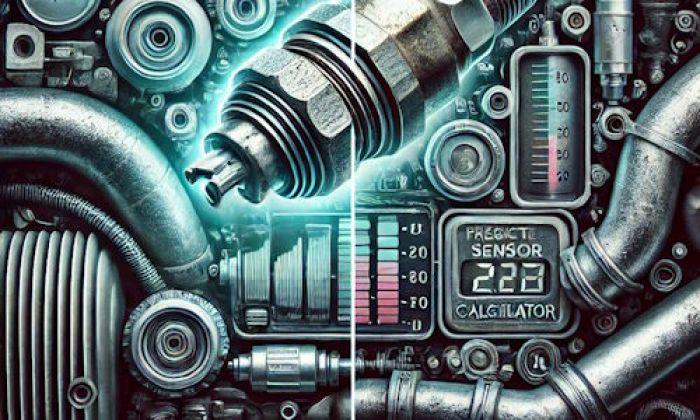The "Transmission Malfunction: Service Now" warning can happen to just about any Ford Fiesta car. There have been reports that it can occur within the first 10,000 miles of the unit while others claimed to have encountered the issue in its latter years.
Transmission malfunction message highlights
- Common reasons:clutch problem, TCU issues
- How to fix:read the codes, replace the clutch kit, replace the TCU
- Possible consequences:transmission may fail fatally at any moment
- Priority level:High
- Can you drive?Carefully
- DIY repair:Impossible
- Repair price range:$2,500-$3,500

Most Common Causes of the Problem
According to various complaints, forums, and reports covering this particular issue in the Ford Fiesta, the most common factors causing the problem are as follows:
1. Low or Poor Fluid Quality
Starting with the most basic, you have to make sure that your transmission fluid is within the recommended level. It should be free from contamination, too.
The transmission fluid is vital to the proper function of the transmission. It lubricates moving parts, helps cool the system, and prevents corrosion. If there is not enough fluid in the transmission, or if it is dirty, it can trigger a number of problems, including but not limited to slippage, grinding noises, gears getting stuck, shift delays, premature shifting, and transmission-related warnings like the "Transmission Malfunction: Service Now" notification.
Insufficient transmission fluid can lead to overheating, as well as premature wear and tear on parts which will ultimately cause transmission failure. Dirty fluid can also result in clogging and other issues. The proper diagnosis of the causes of these problems is essential in order to effectively fix them.
If there is not enough transmission fluid in an engine, it is important to add more as soon as possible. This can be done by checking the dipstick and adding more if needed. If the problem persists, it may be due to a leak. A mechanic can check for leaks and repair them as required.
If the fluid is dirty, it is important to change it. This can be done by draining the old batch and replacing it with a fresh one. Flushing the transmission may be needed depending on the severity of the contamination.
It is also important to clean the transmission filter while you're at it. A mechanic can help with this process if needed.
2. Bad Battery
Before doing anything else, make sure that your battery is supplying enough power first. Having solely the warning message in your automobile without any other signs of malfunctioning transmission components is just one of the many electrical problems that a drained or defective battery may bring about. The other symptoms that you should look out for are dimming or flickering lights, hard starts, and intermittent failure of the audio system.
If your battery isn't due for replacement yet but you think it's the problem, you can use a voltmeter to confirm your suspicion. Simply connect the voltmeter to the battery terminals and let the engine idle for five minutes to test the voltage. The reading of the device should be within the 13- to 14-volt mark. If the voltage is less than 13 volts, the battery has to be replaced since it is no longer charging effectively.
If you have conducted the test with your engine off, the reading should not be below 12 volts. If it is lower than that, it's an indication that you already have to buy a new battery.
3. PCM Calibration Issues
The powertrain control module, or simply the PCM, is like the central nervous system of your car. Therefore, we can liken it to our brain. It is responsible for electronically managing the engine, transmission, and other vehicle components based on the information fed by various onboard sensors.
If the sensors and other parts of your engine and transmission are working well, yet something is wrong with the way that the PCM processes the data, it could lead to the emergence of different warnings in your dash including the transmission malfunction error discussed here. In most instances, this could only be due to a software-induced error within the system.
Most of the people who have experienced the transmission malfunction warning said that simply having their PCM reflashed provided a solution for their problem. This process is simply updating or replacing the car's software based on the approved calibration settings and files of its maker. However, if the PCM hardware is already damaged, you may be in for a more expensive replacement for its hardware.
4. Too Much Resistance in the Wiring
Corrosion is one of the main reasons for electrical issues in vehicles. Corroded wires can bring in all sorts of problems including intermittent power loss, complete electrical failure, dim lights, radio or infotainment system issues, and rough starts.
In the Ford Fiesta, pay special attention to the wires going to the battery, the sensors, and the ground during your diagnosis. These are the usual suspects in this kind of problem.
To check for corrosion, you'll need to visually inspect the wires. Look for any greenish or white residue on the wires, as this is a sure sign of corrosion. If you find any, you'll need to clean the wires with a wire brush or similar tool.
Loose connections are another common problem. You can easily spot loose connections by looking for bare wires or frayed insulation. If you spot any, gently tighten the connection until it's snug.
If you suspect that a wire may be damaged, you can use a voltmeter to test the continuity or resistance. To do this, simply touch one lead of the voltmeter to the wire in question, and the other lead to a good ground. An infinite reading means the wire is open and needs to be replaced. Meanwhile, a low but above zero reading tells you that the wire is shorted and also needs to be replaced.
5. Failing Sensor
As mentioned earlier, your car's PCM heavily relies on its sensors. While there are numerous sensors affecting your transmission, the ones that you should be paying more attention to in your Ford Fiesta are the mass airflow, transmission range, and speed sensors because these parts have the highest tendency to activate the transmission malfunction issue.
If the mass airflow sensor fails, your car will have a hard time knowing how much air is coming into the engine. This will result in an inaccurate calculation of the amount of fuel that should be injected. When this happens, your transmission will either upshift or downshift erratically.
In addition, if the transmission range sensor fails, your vehicle will not be able to keep track of its transmission speed. The incorrect information fed by this sensor can cause the control unit to err when choosing which gear should be engaged as well as when and how much pressure should be applied while shifting gears. This could create timing issues, failure in shifting, and may force your car to go on the dreaded limp mode.
Lastly, if the vehicle speed sensor or VSS fails, your car's computer will not be able to measure the required transmission/transaxle output or wheel speed accurately. A defect on this part can result in the same transmission problems caused by the other sensors mentioned here.
6. TCM Malfunction
Although the transmission malfunction problem in the Ford Fiesta has been mostly correlated to a problem within the PCM, the transmission control module or the TCM is also another part that should be inspected for possible issues.
Normally, reflashing the PCM can fix the TCM-related errors, too. However, if the circuitry of the TCM has already been compromised due to electrical surges or any form of physical damage, it may need to be replaced.
7. Faulty Transmission
If the problem persists upon trying every possible solution listed above, your Fiesta's transmission has most likely reached the end of its useful life and may be due for a rebuild or replacement already.
Aside from the "Transmission Malfunction" warning, the common signs that point to transmission failure are slippage, loud noises when shifting, getting locked in one gear, and a burning smell coming from the transmission. If you notice this, have your car towed to the nearest service station and have the transmission checked as soon as possible.
Other than that, leaks on the fluid lines are also an indication that something is wrong with your vehicle's transmission. These leaks can cause the fluid level to drop significantly, resulting in poor lubrication and, eventually, complete failure.
If you notice any of these signs, it's best to take your car to a reputable mechanic for a thorough inspection. They will be able to properly diagnose the problem and recommend the best course of action.
Conclusion
If you own a Ford Fiesta and you're seeing the "Transmission Malfunction: Service Now" on its dashboard, don't worry because a lot of people who have encountered this have found ways to go around this problem. While there are a lot of factors that may trigger the issue, the ones shown here are the most common culprits and these should give you a good idea of where to start your diagnosis.
About the authors
The CarAraC research team is composed of seasoned auto mechanics and automotive industry professionals, including individuals with advanced degrees and certifications in their field. Our team members boast prestigious credentials, reflecting their extensive knowledge and skills. These qualifications include: IMI: Institute of the Motor Industry, ASE-Certified Master Automobile Technicians; Coventry University, Graduate of MA in Automotive Journalism; Politecnico di Torino, Italy, MS Automotive Engineering; Ss. Cyril and Methodius University in Skopje, Mechanical University in Skopje; TOC Automotive College; DHA Suffa University, Department of Mechanical Engineering






Add comment